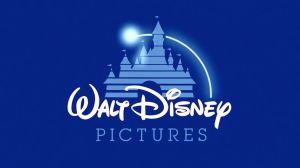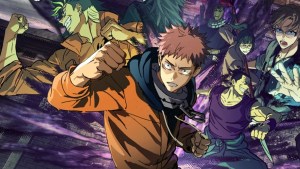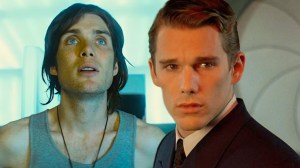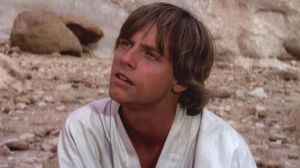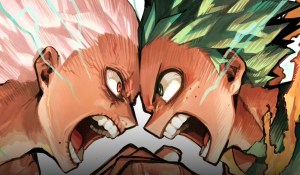For more than 30 years, actor Bill Moseley has been a seminal figure in the horror community, with his big breakthrough role being the eccentric and terrifying “Chop Top” Sawyer in 1986’s The Texas Chainsaw Massacre 2. In subsequent years, Moseley scored a number of roles in genre projects, with 2003’s House of 1000 Corpses allowing the actor to birth a verified horror icon with Otis Driftwood. The actor’s terrifying performance in Rob Zombie‘s debut feature film quickly amassed the villain legions of fans, thanks to his undeniable charisma and intimidating presence. Moseley went on to reprise his role in that film’s sequel, The Devil’s Rejects, cementing the killer as one of the defining horror figures of the decade.
Videos by ComicBook.com
The Devil’s Rejects might have seemingly depicted Driftwood’s death, but Moseley continued to keep busy, continuing to collaborate with Zombie on films like Grindhouse and Halloween, in addition to starring in films like Repo! The Genetic Opera and returning to the series that catapulted his career with Texas Chainsaw 3D.
To the surprise of many, Moseley is bringing Otis Driftwood to life once again with 3 From Hell, which sees the actor reuniting with Zombie and his co-stars Sheri Moon Zombie and Sid Haig, with the film also adding Richard Brake.
ComicBook.com recently caught up with the actor to discuss his history with the genre, the impact it has had on his career, and his future projects.
Halloween Connection
ComicBook.com: You’ve starred in a number of exciting projects, but among the horror community, you’re a major figure. What is your personal connection with the genre and the whole Halloween season?
Bill Moseley: Well, it’s interesting because I actually was expected on Halloween. Way back in 1951, my mother was told that I would be arriving on Halloween. So someone brought her or she brought along a little plastic pumpkin filled with candy to celebrate my arrival and I stayed in for another 11 days [until November 11th]. I remember looking at the birth certificate and seeing that I was a 40-week baby, so not your typical 36 weeks, but I stayed in an extra month, and so I came out not as a Halloween baby but as a peace child, of course, because that’s Veterans Day.
Even though you weren’t born on Halloween, you have a long legacy of playing disturbing characters in dozens of films, are there any misconceptions about who you really are as compared to the twisted characters you play in films?
Not really. I’m pretty open with who I am and what I do, and that’s basically out there in the public eye. I think I’ve even posted on my Facebook, or whatever it is, that I am left-handed. Let’s see what else. So my birthday, left-handed; I don’t really think there’s anything that they’re missing from my end.
Sane Fans

Where I’m coming from is that, based on the terrifying characters you play in films, people might get the impression that you’re a really intense person when the cameras aren’t rolling. Or that the experience on set making those movies can be as intense as what we see on screen.
It can be. Acting is not easy, but yes, I know what you’re saying and what I say to that is, it’s better that I do it than everybody else. Leave that to me and Rob Zombie and the rest of us who are actors and making a movie, which is fiction. I think it’s good for us to handle that and, as they say, “Don’t try this at home.”
And there’s this stigma outside the horror community that people who enjoy those movies have some sort of fascination with death and violence.
Not in my case. I can’t speak for everybody else, but the one thing I have found is that, as I have gone to many conventions and premieres and talk to a lot of horror fans, the horror fans, as a group, are really the most sane and steady humans that I’ve ever encountered, just in terms of groups. Even compared to, let’s say, the sci-fi people or the fantasy people. Really, strangely enough, you’d think that the horror fans would actually be crazy and doing violence and having their basement filled with torture racks and doing all kinds of nutty stuff. But in fact, as I say, I think they’re really the most grounded fans that I’ve ever encountered.
Early Opportunities
One of your first major roles was Texas Chainsaw 2, which led to dozens of other roles in the horror genre. Was becoming a major horror figure one of your goals as a burgeoning actor or was it just something that found you?
I think it’s got a little bit of both. I’ve always loved horror movies since I was a kid and risking a spanking for getting up in the middle of the night in Northern Illinois and walking down that creaky wooden hallway to the library where our Zenith black-and-white TV was, and I would do that on Saturday nights. Because in Chicago, the horror hosted program was called “Shock Theater.” It was on midnights on Saturday night. I would really tempt the wrath of my parents by getting up and going and turning on the TV, keeping the volume down very, very quiet and sitting in front of that black-and-white Zenith and watching movies like Beginning of the End, with the giant grasshoppers, or The Deadly Mantis or Last Man On Earth with Vincent Price. Very cool movie. So all of that stuff. I grew up on the classics, I guess you’d call them.
So I’ve always had an affinity for horror movies. Our family was also very Halloween friendly, even though my mom was very religious and my dad was a former Marine. I guess there’s no such thing as a former Marine, but they loved Halloween. That was also an encouragement. I love things other than horror movies, but horror is my favorite genre, and something that, when I got started with the Texas Chainsaw Massacre 2, back in 1986, I was off and running. I was so happy to be a part of the genre.
I was also so happy to find that you could make a good living at acting in these movies. That was really the great surprise, that there was actually a union, that you could get medical benefits, that if you made enough money over a period of 10 years, not necessarily consecutive, but a cumulative 10 years, you would get a pension, and all of these kinds of things that grownups do. To me, getting into the business when I did, I had never really even thought of those things. Yet thanks to, again, horror movies being a form of Screen Actors Guild acting, et cetera, today I’ve got all those things. I’ve got health insurance for me and my family. I’ve got a pension. I’ve got all kinds of stuff, so it’s a pretty good deal.
Early Career
Acting typically isn’t a thing parents encourage their kids to pursue, given how risky it is, and especially acting in horror movies, due to the intense subject matter, so that’s fascinating that you had that family support from early on.
They never really watched horror movies, so it was not a part of our family where we were expected to go to see horror movies, like horror movies, even talk about horror movies. But as kids, my brothers and I were not pilloried for being into them, and actually I don’t even remember my older or younger brother particularly into it as much as I was. I just had my own things that I liked and certainly horror movies, monsters, dinosaurs, railroads, I liked trains, those are the things that I was just into, and my parents didn’t discourage me from doing any of those things or being interested in those things.
When I did get out of college, I don’t think there was any expectation in my family that I was going to pursue an acting career. That was way out of line, just because I come from Republican Northern Illinois. My dad worked for a company that made tank cars on the railroad. So the idea of an acting career, a Hollywood career, if you will, was not part of the deal. When I graduated from college, the first 10, almost 15 years, I made my living as a writer. I worked for, at first, for an ad agency as a copywriter. I got out of there and then I ended up moving to New York City in 1978, right when cool stuff was starting like punk and subway graffiti artists and new wave music. There was a lot of really incredible stuff going on and I was right in the hub of it and I worked for about eight years as a freelance writer. That’s what I did.
Bringing Chop Top to Life

You’ve spoken before about how much you love Chop Top, is that because of the intricacies of the character or because of how much you loved the collaborative process of bringing that film to life?
Well, I like all work, and with Chop Top in Texas Chainsaw 2, that was really my first big job and that was the movie that really let me know that I could do this as a career. It was very, very exciting. So for that reason, that makes it even more special. But with Chop Top, it was so much fun playing Chop Top. [Director] Tobe Hooper was very encouraging. He loved watching Chop Top. I remember, actually, we were doing a scene in the radio station and I was banging on poor LG. I was smacking his head with a claw hammer, and we probably did about 10 or 11 takes of that. It was a very closed set and it was hot because back then it was film and hot lights, and we’re in a small space, and each time I’d do the scene I’d be whacking on poor Lou Perryman, and [makeup effects artist] Tom Savini was kneeling right off the camera, pumping blood through a tube that came out the top of Lou’s hairline and sprayed Lou’s face with blood.
We ended up having to do about 10 or 11 takes, and each time we have to reset, we had to wipe Lou off, we had to load the blood back up. Sometimes we had to straighten out my claw hammer because it was made out of foam rubber and it had a coat hanger wire in the middle of it, just to keep it together. Every once in a while, I’d get carried away and be banging on Lou and the hammer would bend like a pretzel, so have to straighten that out, so that cost a couple of retakes. But finally, we’d done 11 takes, and each time I was coming up with new things, like, “Time for incoming mail,” and, “Going down now,” “Napalm,” all kinds of different things.
If I had a hammer, I think I was singing. All kinds of different things, and finally we’ve done 11 takes and there’s got to be at least one or two good ones in there. Tobe Hooper said, “That’s great. That’s great. Well, let’s just do one more.” I looked at Tobe, and I said, “Tobe, am I doing something wrong?” He looked at me and he said, “Hell no, Bill. I’m just having fun watching you.” When you have a director that says something like that, that totally made it for me. Just knowing that, it’s not even about the movie at that point. It’s about just entertaining, just being entertaining in the moment. That kind of support was, you don’t really find that that often. So that’s another part of what I appreciated about that experience.
Return of Otis Driftwood
For more than a decade, fans had thought Otis Driftwood was killed in The Devil’s Rejects, only to learn last year he was coming back to the big screen. Had you known since filming that movie that Otis Driftwood would return eventually?
Well, a magician never tells his tricks, but I would have to say that my first reaction was, I was really happy. I was happy to hear that Otis and Baby and Captain Spaulding lived to fight another day.
I’m glad we did it. I’m glad we finally figured out a way to get everything back together again. It’s funny, people say, “Well, it looks like you were pretty well killed at the end of Devil’s Rejects,” and to them I say, “Yeah, but consider who was shooting at us. It’s the Rushville Sheriff’s Department. The gang who couldn’t shoot straight.” It’s not really that big a surprise that we managed to survive.
And the events of this new film sees a slight shift in the dynamic, with Richard Brake’s character being so prominent and your character spending less time with Sid Haig’s. Was the dynamic of shooting this one a lot different from the last films?
It seemed to be part of the natural order of things. It felt organic. I would also say that working with Richard Brake was a lot of fun. It wasn’t as jarring as it might’ve been. And I think that’s probably just thanks to the way that Rob’s story treated that.
Working with Sid in Devil’s Rejects was so much fun. And, of course, the bond between Sid and Sheri and I that we forged during Devil’s Rejects was really strong and fun and really made those relationships. I mean, “Ain’t no ice cream in your fucking future.” And, “I’m going to have me some tutti-fucking-frutti.” That stuff is just pure cinema magic.
This was a different story, years later. I thought, if Richard Brake was in fact the new Reject or whatever it is, I thought he did a great job. It was fun to work with him. It was fun to work with Sheri again and Rob, that was very comfortable and just, again, felt like we were back on the same bicycle.
Evolving Genre

When it comes to the future of horror, you’ve expressed how you’d be interested in working with filmmakers like Ari Aster and Panos Cosmatos, who are exploring the genre in unconventional ways. What are your thoughts on films like Hereditary or Get Out being referred to as “elevated horror”?
The horror genre is really wide and you can do a lot of different things, play a lot of different characters, tell a lot of different stories. I think that’s what’s so exciting, that it’s not a restrictive genre by any stretch, and that there are lots of ways to “re-interpret” the genre and what works and what doesn’t work. I think you’re always going to have basic story structure, beginning, middle, and end. You’ve got to have probably some people you can relate to throughout the movie. There are a couple of basic fundamentals, ground rules, but you can do a lot of different things and, especially with CGI now getting very sophisticated, there’s lots of stuff you can do, but it still comes down to connecting with the audience, connecting with the psychology, connecting with what scares people.
Just going deep like that, and that is the fun part and the cool part of the horror genre. Certainly a fun part and cool part that is really connecting with people, getting them to identify and scaring the crap out of them. It’s in a movie at a movie theater. It’s a very safe place to do that. That’s what I love, too, is that you do have a set of rules. You’ve got previews of coming attractions, then the movie comes on, you see the movie, and then the credits roll and the lights go up. Certainly, a lot of times, if it’s a good movie, you take it with you, but you’re not under attack. You’re able to experience whatever that experience is in the relative safety of a movie theater.
For me, I think that’s great. I love these new guys coming in and making new movies. Tobe Hooper was one of those guys. He came in there and made new movies. John Carpenter, all of these guys, Sam Raimi, if you look at all of them, they had these exciting beginnings where they really just had a different way of looking at things. I think that’ll never stop. I don’t think you can ever exhaust the horror genre. I think people will keep coming up with stuff. Men, women, old and young, the storytellers. What I like about them is that, I get excited because I’d love to work with them, just to experience those different ideas, the different stories. I really go for it, which I mentioned a hundred times. I’m not in this for the money. I’m in this to really add my services to what the director wants to do and what the screenwriter has imagined.
The Future
And with filmmakers like Carpenter and Raimi, people try to replicate their legacy, but what made them such successes is the ways they did their own thing at the time they came out. It’s these people breaking expectations currently that pave the future for the genre.
Yep, and that’s happening all the time.
Reboots are also a popular trend in the genre, do you think you could see a reboot of House of 1000 Corpses somewhere down the line?
They’re welcome to it. If they can reboot that, that’s no problem.
And would we see you come back for that reboot?
Well, I think in 20 years I’ll be more concerned with trying to get the spoon into my mouth.
And, in the meantime, we have 3 From Hell to look forward to.
I’m very excited to see it when it opens September 16th and I hope it is something that the horror fans really appreciate. I worked hard and I expect that everybody’s going to have a reaction. We say we don’t mind if it’s a one or a 10 either way, if you really hate it or you really love it. It’s those four and five and sixes that we try to avoid.
Is there anything else on the horizon we should be aware of?
This movie opening is the start of my convention season. So I’m looking forward to that. I’m also working with a band formerly called War Beast, and working with them on a new musical project called Mr. Machine, and I’m writing, so that’s good. It’s good to be writing some stuff and it’s never a dull moment in the Moseley household.
*****
Fans can check out 3 From Hell during a special three-night event beginning on September 16th. Tickets for the September 16th, 17th, and 18th nationwide release of 3 From Hell are available at FathomEvents.com/3FromHell.

